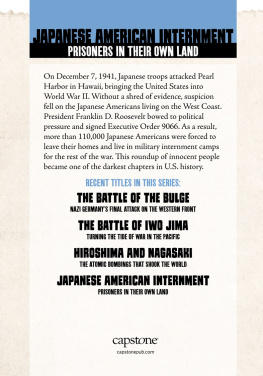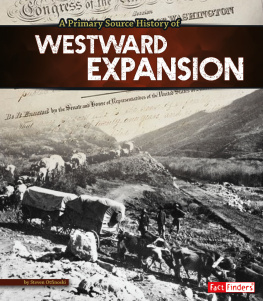CHAPTER 1
A MORNING TO REMEMBER
D ecember 7, 1941 began as just another lazy Sunday at the Pearl Harbor Naval Base on the Hawaiian island of Oahu. Some early risers were already eating breakfast while other servicemen were dressing for church services. Many more were still asleep in their bunks on board ship or lying awake thinking about the leisure-filled day ahead of them.
About 30 miles (48 kilometers) away, at the Opana Point Radar Station near the islands northern tip, George Elliott and Joseph Lockard were on the job, scanning the skies on their mobile radar unit.
U.S. Navy battleships were among the vessels docked at Pearl Harbor.
Suddenly, at 7:02 a.m., the two young Army privates noticed something odd on the radar screen. A big blip appeared to be heading southward toward Oahu at a fast pace. They assumed it was a large group of aircraft about 130 miles (209 km) away.As they tracked the blip, they called the information center at
Satisfied that there was no cause for concern, Lockard and Elliott went to breakfast when their replacements arrived. When they last tracked the blip, it was just 22 miles (35 km) from Oahu.
Soon after,
A HISTORY OF HATRED
The sneak attack on Pearl Harbor was the climax of anti-American feelings that had been brewing among the Japanese for nearly a century. It began in 1853 when U.S. battleships under the command of Commodore Matthew Perry anchored near Tokyo and forced Japan to sign a diplomatic agreement with the United States. This opening of the proud, isolated kingdom led to Japan being forced to trade with Western nations. Humiliated by these events, Japan resolved to transform itself into a world power that could compete economically and militarily with the United States and Europe. Japan achieved this goal and set out to show off its military strength in wars with China (18941895) and Russia (19041905), both of which Japan won.
In late 1937 Japanese troops invaded Nanking, China, and brutally massacred approximately 300,000 soldiers and civilians.
Following World War I (19141918), members of an international conference in Washington, D.C., were concerned about Japanese aggression in Asia, so they set limits on the nations manufacture of weapons and warships. Again humiliated, the Japanese resolved not to let the Western powers intimidate or bully them. In 1931 Japanese troops invaded the Chinese province of Manchuria and by 1937 were attacking other parts of China.
A NEW WORLD WAR
Nazi Germany had sparked World War II (19391945) in September 1939 when it invaded Poland. The United States had stayed out of the war but supported the cause of the Allies, which included Great Britain and France, who were fighting Germany and Italy.
Japanese soldiers entered French Indochina in September 1940 and invaded more of the country the following year.
In 1940 Japan joined Germany and Italy against the U.S. President Franklin D. Roosevelt was hopeful that these tough measures would bring the Japanese to the negotiation table, but they were no longer interested in negotiating. Japans leaders were preparing for war against what they saw as their sworn enemythe United States.
WARN I NG S I GNS
The Pearl Harbor attack should not have come as a complete surprise to the United States. There had been warning signs going back nearly a year. In January 1941 a coded message from Tokyo, the Japanese capital, to the Japanese consulate in Honolulu, the Hawaiian capital on Oahu. The message asked the consulate to note the location of U.S. ships docked at Pearl Harbor. It took U.S. authorities a month to decode the message, but it was never sent back to those in charge at Pearl Harbor.
On the very morning of the attack, another Japanese message was intercepted that was meant for Japanese ambassador Kichisaburo Nomura telling him to announce a break in relations with the United States and destroy his code machine. When Army Chief of Staff George C. Marshall received the message, he immediately tried to alert the commanders in Hawaii. But because of technical problems, his warning didnt arrive until hours after the attack had taken place.
CHAPTER 2
THE FIRST ATTACK
S eaman Short later said. Flames and smoke burst from the first plane I aimed at. I think I also hit the second plane which I aimed at but by then I was so busy that I cannot say for sure.
A reconaissance photo taken by the Japanese showed U.S. warships lined up on Battleship Row.
The U.S. Navy had eight battleships stationed at Pearl Harbor. Seven of them, including the Maryland, were anchored on the eastern side of Ford Island in the heart of Pearl Harbor. Known as Battleship Row, this was the first target for the attacking Japanese planes. Lined up two by two, the battleships were sitting ducks for the enemy bombers.
The
Within minutes, a 1,760-pound (798-kilogram) bomb had struck the
When a bomb hit the magazine of the USS Arizona, the ship exploded, killing hundreds of men instantly.
Carson was one of the lucky ones. Of the 1,500 officers and crew aboard the Arizona, only 335 survived. Many who werent killed instantly by the explosion were trapped below deck in their bunks and drowned. Others burned to death when they leaped into the fiery waters that were coated with oil spewing from the ships punctured fuel tanks.
None of the other six exposed battleships escaped the relentless bombing. The Oklahoma was struck by nine torpedoes and leaned so badly that it capsized, drowning 429 men. The West Virginia, which was anchored just north of the Oklahoma, was hit by six torpedoes and also leaned badly. It managed to stay upright, but it still sank 40 feet (12 m) to the harbors bottom.
The USS Maryland (left) and the capsized USS Oklahoma
Of the 105 crew members who died on the West Virginia, the grimmest casualties.
At the end of and out of harms way for the moment.
A second target for the attackers were the six airfields on Oahu. It was crucial for the Japanese to destroy as many grounded planes as they could to prevent American pilots from taking off for a counterattack. Hardest hit was Hickam Field, just south of Pearl Harbor. The planes were lined up wing to wing to prevent sabotage on the ground. But this interlocking formation actually made the planes easy targets for the Japanese pilots.




















